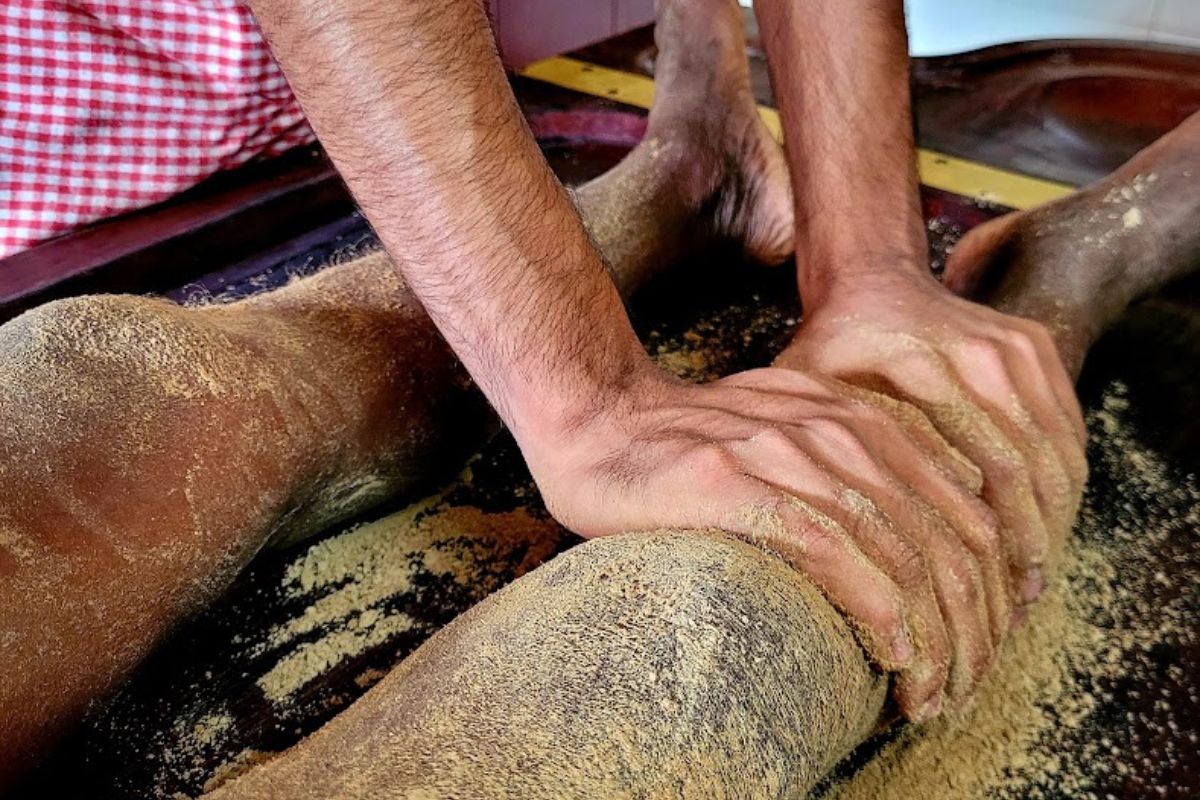Overview
Amavata (Rheumatic fever)is an autoimmune focal inflammatory disorder that typically affects the small joints in hands and feet that causes pain, swelling, stiffness, destruction and functional disability in the affected joints.
It is defined as a chronic multisystem disease characterized by persistent inflammatory synovitis, usually involving peripheral joints in a symmetric distribution with a potential to cause cartilage destruction and bone erosions.
The most commonly affected joints are the small joints of the fingers, thumbs, wrists, feet, and ankles. However, any joint may be affected. The knees are quite commonly affected. Less commonly, the hips, shoulders, elbows, and neck are involved. In some people, just a few joints are affected. In others, many joints are involved.
Overall it is a systemic, post streptococcal, non – suppurative inflammatory disease.
“Rheumatic fever sparks from the throat, licks the joint and bite the heart”
The chronic stage involves all the layers of heart(pancarditis), referred to as Rheumatic Heart Disease (RHD).
According to ayurveda it is a disease of amayukta vata condition.The presence of ama, rasadhusti with superadded vatakopa leads to severe pain and stiffness in the joints.Agni (Digestive fire) is severely masked in the koshta (Digestive tract) and dhathu (tissues) leading to delayed paka (digestion) and poshana (nutrition).
Symptoms
Common symptoms of amavata are:
- Pain in one or more joints.
- Body pain (Myalgia).
- Anorexia, thirst.
- Lassitude.
- Heaviness of body.
- Fever.
- Indigestion and feeling of hollowness of the limbs.
- Swelling in and around joints.
- Stiffness.
- Redness & heat in joints.
- Reduced range of movements of affected joints.
In advanced stage:
- Painful swelling in the joints of hands, legs, head, ankle, sacrum, knees and thighs.
- Weakness to the digestive power
- Dribbling of saliva
- Anorexia
- Tastelessness
- Burning sensation
- Excessive urination
- Hardness of the abdomen
- Syncope
- Colic
- Thirst
- Heaviness of body
- Lack of attitude for work
- Vomiting
- Giddiness
- Gripping sensation of the heart
- Constipation
- Rigidity of the body
- Sounds in the intestines
- Flatulence
Types
Aamavatha associated with Pitta, Vata and Kapha.
Investigations
- Blood test – C- Reactive Protein, ESR.
- Serological marker – Rheumatoid Factor, Antisterptolysin O titer.
- Antinuclear factor (ANF), Antinuclear antibodies (ANA).
- Plain radiography.
- ECG.
Causes
- Viruddha Ahara(Incompatible food).
- Viruddha Chestha(Incompatible actions).
- Mandagni(Hypo functioning of agni).
- Nischala(Lack of exercise).
- Snigdha Ahara (oily food) followed by immediate exercise.
Diagnosis & Treatment
When you consult an Ayurveda physician with symptoms of rheumatoid arthritis, they will examine your case in detail. They will inquire about any risk factors in your life and will take a stock of your life to know if you have been knowingly or unknowingly doing any of the causative factors. They will also examine your affected joint to understand more about the degree of progress of arthritis before coming to a decision about the management.“Initially ama pachana (improving digestive power) and later vata shamana (pacifying vata dosha) are the clinical protocols.”
Based upon the Ayurvedic concepts the defense strategy consists of:
- Increasing the digestive and metabolic fires, or Agni.
- Stopping the formation of Aama at different levels.
- Increasing digestion and excretion of Aama.
- Balancing the doshas.
- Restoring the damaged intestinal mucosa and absorption.

Since Ayurvedic procedures and therapies have multiple effects, management will be enumerated and described by the therapy rather than the effect.
Panchakarma therapy: For increasing the Agni, excretion of Aama and removal of vitiated and accumulated Doshas, purification or Shodhana and pacifying or Shamana treatments are given. This category of treatment comes under Panchkarma therapy.
It consists of:
- Medicated or retention enemas.
- Medical emesis.
- Medical purgation.
- Nasal medication.
- Bloodletting.
Out of these five treatments the medicated enema is considered to be the most effective and specific therapy for this category of diseases. Emesis and purgation may reduce Agni and hence are not used much in Amavata. Bloodletting is effective but because of its invasive nature is not used much. Medicated or retention enemas include herbal retention enemas and oil retention enemas. Herbal retention enemas remove Aama and accumulated Doshas. Various herbs used are Dashmoola, Rasna, Eranda (Ricinus communis) , Bala (Sida cordifolia) and Gokshura (Tribulus terrestris).
Oil retention enemas help to replenish the depleted body constituents. Various oils used are Panchkola Ghrita, Rasnadi Ghrita, Ashwagandha Ghrita, castor oil, Dhanvantara Taila, and Narayana Tailam.
Based upon the clinical condition of the patient and judgment of the treating physician, these enemas can be prescribed every other day or less frequently.
Pacifying treatments are called “Shamana treatments” and are recommended when the patient is not able to tolerate the Shodhana or purifying treatments. These are also given as maintenance treatments following the purifying treatments. These treatments help eliminate accumulated Doshas, Aama, and toxins and to regain strength.
Diet
According to Charaka Samhita “Disease is the result of faulty nutrition and the distinction between health and disease arises as a result of the difference between a wholesome and unwholesome diet.”
The normal response to food intake is to produce an optimum amount of Agni or digestive enzymes. Normal or increased food intake when Agni is low causes a feeling of heaviness. When this feeling of an “increased load” on the gut and body tissues is felt, it is important to create “lightness” in the body and gut so the digestive and metabolic functions are allowed to return to normal. The diet should be smaller in amount, easily digestible and should be consumed when the Agni is high. High Agni is clinically manifested by increased appetite and low Agni by lack of appetite and a feeling of heaviness in the abdomen. Agni is high around noon time so morning snacks and evening dinners should be light, and lunch should be heavy.
Recommended food and drinks ( Pathya – wholesome )
Drinks :
Warm water or medicated water with Panchakola (Pippali, Pippalimula, Chavya, Chitraka, Shunthi) in small quantities at a time helps in digestion and disintegration of Aama.
Horse gram and green gram soup.
Only use boiled water for drinking.
Wine-old Asava and Arishta.
Food items :
Barley, horse gram, kodo millet and the red variety of rice are recommended. These foods are light and easy to digest. Barley kernels and other products made from barley lower inflammatory markers.
Vegetables preferably with a bitter taste like Patola or luffa, Gokshura (Tribulus terrestris), Moringa, Punarnava( Boerhaavia Diffusa ), bitter grout, bottle grout, are recommended.
Spices like ginger, turmeric, small onion and garlic help to add flavor to these dishes and also have antimicrobial, anti-inflammatory and analgesic properties besides their Agni promoting impact.
Meat of Laav Pakshi-Jungle bush quail (Perdicula asiatica), meat of animals living in dry land forest, is recommended.
Unwholesome food, drinks & activities :
Drinks :
Cold and impure water.
Cool drinks and carbonated drinks.
Alcohol.
Lemon juice, grape juice (sour taste).
Food:
Vishama, virudha, asathmya ahara (Incompatible, unwholesome food).
Reheated food from refrigeration.
Tinned food.
Fish and sea foods.
Gassy vegetables , potato, tapioca, sweet potato, colocasia root, cauliflower.
Paneer, cheese.
Ice Cream, junk food.
Reduce Bengal gram and jaggery.
Lifestyle :
Limit physical activities until pain inflammation and other symptoms have improved.
If you are overweight then take advice from your doctor.
Manage stress.
Follow the ayurvedic way of dinacharya (Daily routine) and ritucharya(seasonal routine).
Balance in your ahara (diet), nidra (sleep) and brahmacharya (sensory gratification) is very important.
In Saranya ayurveda hospital we believe in restoring the quality of life and reducing recurrence of disease.We are giving treatment in a traditional and authentic way with a modern approach rooted in evidence based practise. The medicines and therapies are fixed only after individual consultation through listening, understanding the need and analyzing the root cause. We incorporate different diagnostic methodologies in identifying the root cause of pain and plan unique customized treatment strategies to eliminate the complaints.
References: Ashtanga Hridaya, Charaka Samhita, Sushrutha Samhita.

